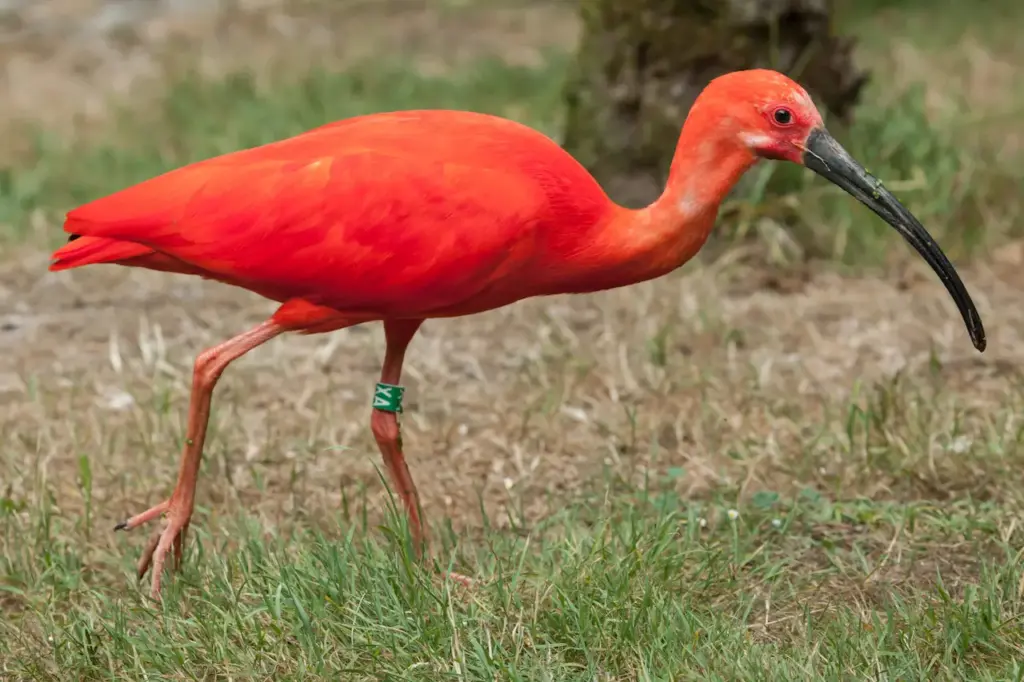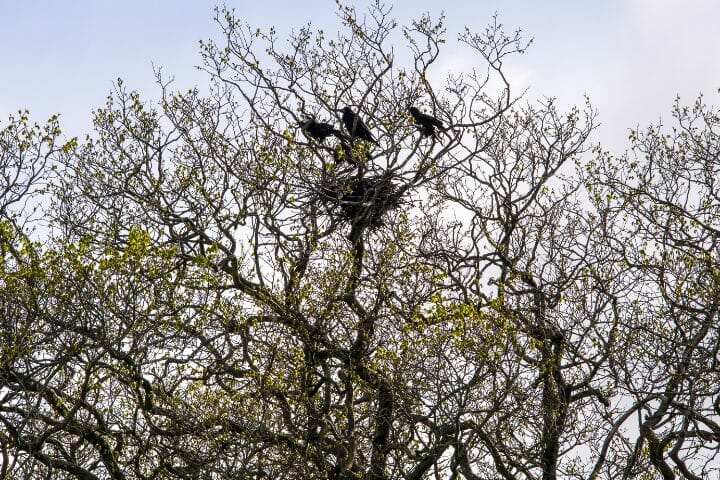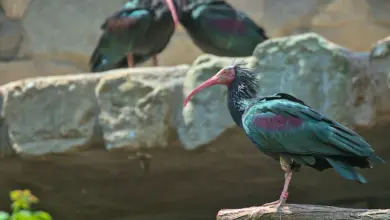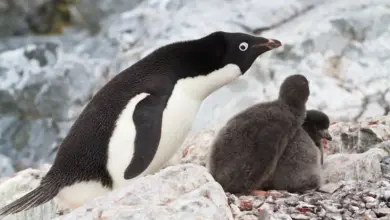The Scarlet Ibises (Eudocimus ruber)
The Scarlet Ibises (Eudocimus ruber) are very closely related to the American White Ibises and these two are sometimes considered conspecific (one species).
The life span of Scarlet Ibis is approximately 15 years in the wild and 20 years in captivity.

Ibises resemble herons and share many of their habitats and behavioral traits, but unlike herons, ibises fly with necks outstretched and often in V-formation.
Ibis Information and Listing of Species … Ibis Species Photo Gallery
Scarlet Ibises Distribution / Range
The Scarlet Ibise occur naturally in tropical South America as well as the islands of Trinidad and Tobago. It is the national bird of Trinidad and is featured on the Trinidad and Tobago coat of arms along with Tobago’s national bird, the Rufous-vented Chachalaca.
While the species may have occurred as a natural vagrant in southern Florida in the late 1800s, all recent reports of the species in North America have been of introduced or escaped birds.
Scarlet Ibises Description
Adults measure between 56 – 61 cm in length and weigh about 650g.
The plumage is mostly bright red (“scarlet”), except for the black wing-tips.
Juveniles have a grey and white plumage. As they mature and ingest red crabs the plumage over time takes on the bright red coloration of the adult.
Scarlet Ibises Diet / Feeding
Ibises mostly feed in shallow waters on aquatic insects, mollusks, frogs, and food sifted from the water surface.
The Scarlet Ibises’ bright coloration is caused by the ingestion of red crabs caught in tropical swamps .
Their diet also includes insects caught on land, as well as lizards, worms, skinks, and other small reptiles.
Some species will also take small birds.

Scarlet Ibises Breeding
Most breeding activities are observed after the rainy season, when plenty of food is available.
They typically nest in colonies, often with other water birds.
The nests are shallow cup-shaped platforms of sticks, grasses or reeds that are typically situated on trees near a body of water, such as rivers, swamps or lakes. Although some ibises also make their nest amongst rocks and on cliffs,
The average clutch consists of 2 – 4 eggs. The nests are often reused year-after-year.
Earth Life strives to maintain accurate and up-to-date information; however, mistakes do happen. If you would like to correct or update any of the information, please contact us. THANK YOU!!!




